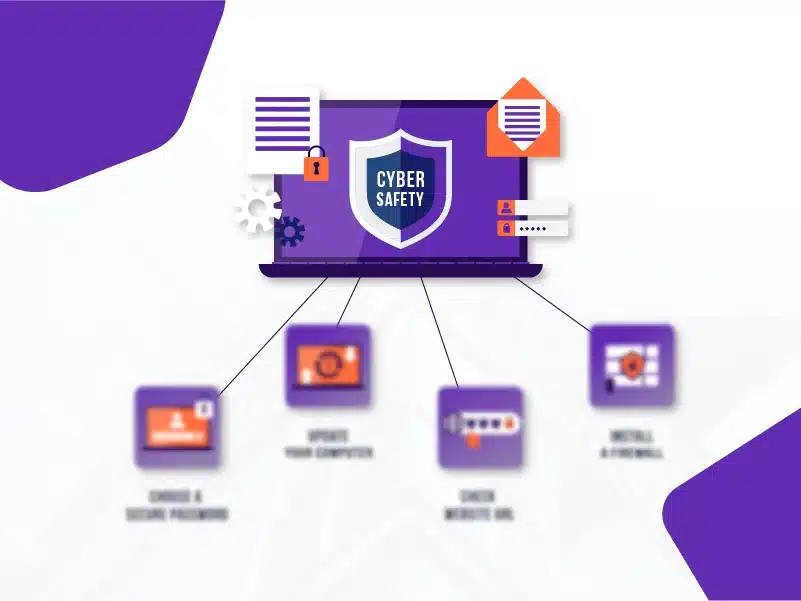Due to the digital age we live in today, websites play a pivotal role in the success of businesses, organizations, and personal endeavors. However, with the countless advantages of an online presence comes the ever-present threat of cyberattacks. From data breaches to website defacement, the potential for harm is significant. Therefore, ensuring your websites security is paramount. In this blog, we will explore essential tips to help you keep your website secure and protected from cyber threats.
Keep Software and Plugins Up to Date
One of the most straightforward yet critical steps in a website security check is keeping your software, content management system (CMS), and plugins up to date. Developers often issue updates to address vulnerabilities and enhance security. Failing to update these elements can leave your website exposed to known exploits. Establish a regular practice of inspecting and applying updates consistently.
Choose a Secure Hosting Provider
Your choice of a hosting provider plays a significant role in the security of website. Opt for a reputable hosting company that emphasizes security. Look for features such as SSL certificates, regular backups, and robust firewalls. Shared hosting can be cost-effective but may expose your site to additional risks, so consider a dedicated or virtual private server (VPS) for enhanced security.
Implement Strong Authentication
Require strong, unique passwords for all user accounts, including administrators and contributors. Implement two-factor authentication (2FA) whenever possible. 2FA enhances the security of website by necessitating users to supply a secondary verification method, like a temporary code sent to their mobile device. This greatly heightens the difficulty for unauthorized individuals to access your website.
Regularly Back Up Your Website
Backup your website security software regularly to ensure that you can quickly recover your data and content in the event of a cyberattack. Automated strategies for website maintenance and backup can save you time and stress, and they should be stored offsite to prevent loss in case of a server breach. Ensure you test the restoration process to guarantee that your backups are functional.
Employ Web Application Firewalls (WAF)
A Web Application Firewall is a website security software that filters and monitors HTTP requests and responses to protect your website from malicious traffic. It serves as a protective shield, standing between your website and potential threats. By implementing a WAF, you can prevent common web-based attacks such as SQL injection and cross-site scripting (XSS).
Regular Security Audits and Scans
Conduct a regular website security check, audit, and vulnerability scan on your website to identify potential weaknesses. Numerous automated tools are available to assist in this process. Identifying vulnerabilities before cybercriminals do is a proactive approach to safeguard your website.
Secure File Uploads
If your website security software allows file uploads, you must implement strict security measures to prevent malicious files from being uploaded. Ensure that file uploads are scanned for malware, limit the types of files that can be uploaded, and store them in a separate directory with restricted access.
Limit User Permissions
Assign user permissions judiciously. Grant access to the minimum required for each user role. This reduces the risk of unauthorized access to critical website functions. Regularly review and update user roles and permissions as necessary.
Content Security Policy (CSP)
A Content Security Policy is an additional layer of the security of website that helps prevent cross-site scripting (XSS) and data injection attacks. By defining where content can be loaded from and executed, you can control what is allowed on your website, reducing the risk of malicious code execution. Consider this as one of the paramount security strategies while building an e-commerce website.
Educate Your Team and Users
Human error is often the weakest link in the website security check. Train your team and users about safe online practices. Teach them to recognize phishing emails and the importance of keeping their devices secure. A well-informed team and user base can be your first line of defense.
Monitor Website Activity
Implement real-time monitoring of your websites security activity. This includes keeping an eye on login attempts, traffic spikes, and file changes. Unusual patterns can be indicators of an ongoing attack. Monitoring allows you to respond quickly and mitigate potential damage when building an e-commerce website.
Incident Response Plan
Prepare an incident response plan detailing how to respond to a security breach. This plan should include steps for identifying and containing the breach, notifying affected parties, and restoring your website to a secure state. Having a well-defined plan can minimize damage and downtime.
Regular Security Updates and Training
Stay updated on the latest security threats and solutions by regularly reading about and attending training on cybersecurity. Awareness of emerging threats and understanding evolving security practices are crucial to keeping your website secure. In conclusion, websites security is an ongoing commitment, and the tips mentioned above are foundational to ensuring that your website remains protected from cyber threats. It’s essential to understand that no website is completely immune to attacks, but by implementing a strong security strategy, you can significantly reduce the risk of falling victim to cybercriminals. Ultimately, the investment in website security not only protects your digital assets but also safeguards your reputation and the trust of your users.


